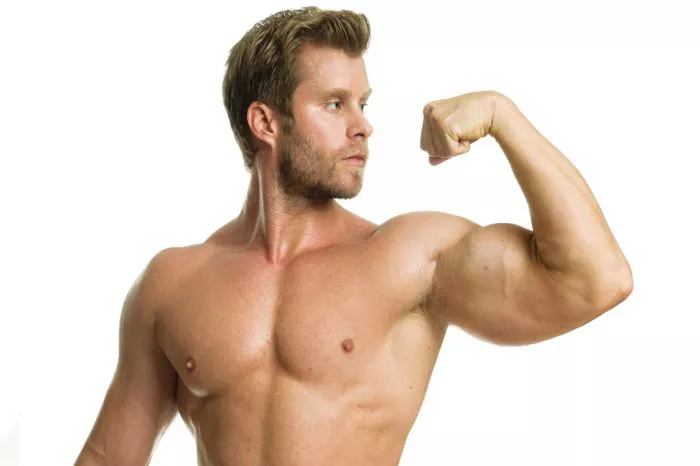Muscular compensation is a physiological mechanism that occurs in the human body in response to biomechanical imbalances or deficiencies. It involves the recruitment and activation of alternative muscle groups to compensate for weaknesses, limitations, or injuries in other muscles or areas of the body. This compensatory mechanism aims to maintain functional movement patterns and stability, allowing individuals to perform tasks or activities despite underlying issues.
Understanding muscular compensation is essential in various fields, including sports performance, physical therapy, and biomechanics, as it plays a significant role in movement efficiency, injury prevention, and rehabilitation. In this exploration, we’ll delve into the mechanisms, implications, and consequences of muscular compensation, along with strategies to address and mitigate its effects.
Mechanisms of Muscular Compensation:
Muscular compensation can occur due to various factors, including muscle weakness, joint instability, poor biomechanics, and movement dysfunctions. When a muscle or muscle group is unable to adequately perform its intended function, other muscles may step in to compensate for the deficiency. This compensation can involve altered movement patterns, changes in muscle recruitment, and increased activation of secondary or tertiary muscle groups.
For example, if an individual experiences weakness or dysfunction in their quadriceps muscles (located on the front of the thigh), they may compensate by recruiting their hip flexors or calf muscles to assist in activities such as walking or climbing stairs. Similarly, in the case of joint instability, surrounding muscles may contract more forcefully to provide additional support and stability, thereby compensating for the weakened or injured joint.
Implications of Muscular Compensation:
While muscular compensation can help individuals maintain functional movement patterns and perform tasks despite underlying issues, it can also have implications for biomechanical efficiency, injury risk, and long-term musculoskeletal health. When certain muscles are consistently overworked or recruited to compensate for weaknesses or imbalances, they may become fatigued, strained, or prone to injury over time.
Furthermore, compensatory movement patterns can lead to altered biomechanics and dysfunctional movement habits, which may exacerbate existing issues or contribute to the development of new injuries. For example, individuals who consistently compensate for weak or tight muscles may develop compensatory movement patterns that place excessive stress on joints, ligaments, and soft tissues, increasing the risk of overuse injuries and musculoskeletal pain.
Complications of Muscular Compensation:
If left unaddressed, muscular compensation can lead to a range of complications and musculoskeletal issues, including:
Overuse Injuries: Compensatory movement patterns can result in overuse injuries, such as tendinitis, bursitis, or stress fractures, due to repetitive strain on specific muscles or tissues.
Muscle Imbalances: Chronic muscular compensation can lead to imbalances between opposing muscle groups, which can further exacerbate movement dysfunction and increase the risk of injury.
Joint Dysfunction: Altered biomechanics resulting from compensatory movement patterns may contribute to joint instability, misalignment, or degeneration, leading to joint dysfunction and pain.
Reduced Performance: Muscular compensation can impair movement efficiency and performance in sports and physical activities, limiting an individual’s ability to perform at their optimal level.
Chronic Pain: Prolonged muscular compensation can result in chronic musculoskeletal pain, discomfort, and dysfunction, affecting an individual’s quality of life and overall well-being.
Treatment and Prevention Strategies:
Addressing muscular compensation requires a comprehensive approach that addresses underlying imbalances, weaknesses, and movement dysfunctions. Treatment and prevention strategies may include:
Corrective Exercise: Implementing targeted exercises and stretches to address muscle imbalances, improve flexibility, and strengthen weak or underactive muscles.
Physical Therapy: Working with a physical therapist to identify and address movement dysfunctions, biomechanical issues, and compensatory patterns through manual therapy, therapeutic exercises, and neuromuscular re-education techniques.
Biomechanical Analysis: Conducting a thorough assessment of movement patterns and biomechanics to identify compensatory mechanisms and develop personalized interventions to address underlying issues.
Movement Education: Providing education and guidance on proper movement mechanics, posture, and body alignment to promote optimal movement patterns and reduce the risk of compensatory habits.
Functional Training: Incorporating functional training exercises that mimic real-life movement patterns and activities to improve movement efficiency, stability, and neuromuscular control.
Rest and Recovery: Allowing adequate time for rest and recovery to prevent overuse injuries and fatigue, especially during periods of intense training or physical activity.
Ergonomic Modifications: Making ergonomic adjustments to workstations, equipment, or environments to reduce the risk of repetitive strain injuries and promote better body mechanics.
Collaborative Care: Collaborating with healthcare professionals, such as physical therapists, chiropractors, and athletic trainers, to develop comprehensive treatment plans and monitor progress over time.
The Bottom Line
In conclusion, muscular compensation is a complex physiological mechanism that occurs in response to biomechanical imbalances or deficiencies in the body. While it can help individuals maintain functional movement patterns and stability in the short term, chronic compensation can lead to a range of musculoskeletal issues and complications over time. Addressing muscular compensation requires a multifaceted approach that includes corrective exercise, physical therapy, biomechanical analysis, and movement education to restore optimal movement patterns, prevent injuries, and promote long-term musculoskeletal health.
Related Topics:
Efficient and Effective: HIIT Workouts for Women at Home


